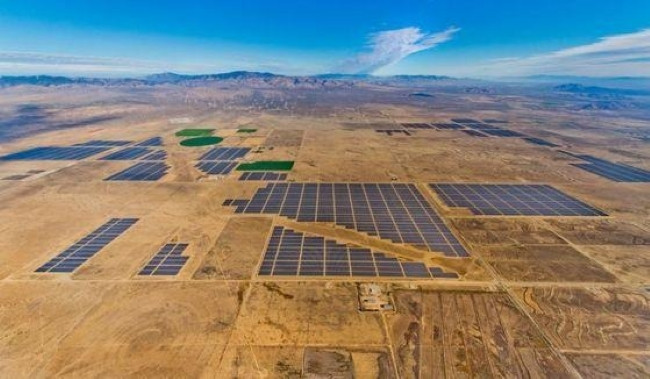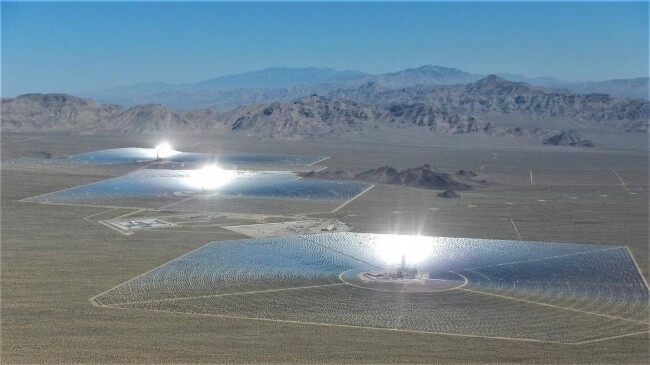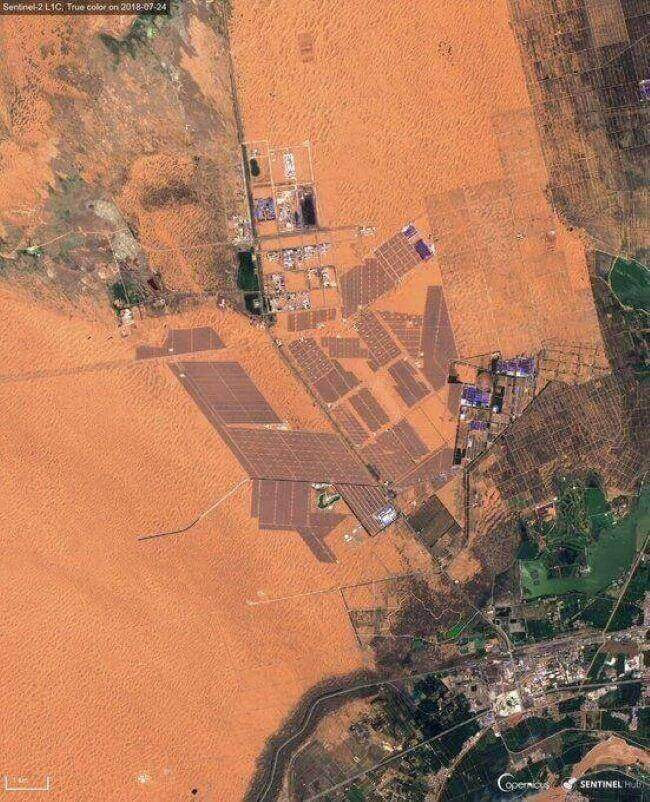Solar Power – It’s Not Just for Dreamers Anymore
| 15-08-2019 | By Gary Elinoff
Electrical Utilities are now generating Solar Power by the Hundreds of Megawatts.
There is a quiet revolution going on even now in solar power. Electrical utilities worldwide are installing huge solar power plants, making it that much less necessary to burn hydrocarbons, ruin ecosystems by damming rivers, or worst of all, building nuclear power plants.
Nothing but Sunlight
Let’s take a look at some of the largest solar power plants in the US.
Solar Star
Located in Rosamond, California, the Solar Star’s peak output is 579 megawatts, which is comparable to what a fossil fuel plant burning oil or coal can produce.

Image source: Sunpower.
This Solar Star plant employs solar cells, so it is said to be a photovoltaic plant. Solar cells are semiconductor devices that convert sunlight directly into electricity. They are cheap and efficient and getting more so all the time.
Ivanpah
The Ivanpah plant in California’s Mojave Desert by Bright Source generates 377 megawatts of power.

Ivanpah solar electric generation system. Image source: USGS
Ivanpah works differently. Mirrors track the sun and focus its rays on a receiver, which is used to boil water. The steam generated is used to power an electrical generator.
But it doesn’t end there! If the power grid can’t use all of the potential generated electricity, the surplus heat used to melt a special salt-based mixture, which can store that energy temporarily, converting it into electricity at night. More about storage later.
Solana
The Solana plant in Arizona can produce a peak of 289 megawatts.
The vertical structure in the illustration concentrates the sunlight captured by the mirrors and uses it to heat oil. The heated oil then animates immediate electrical generation. The plant also heats salt mixtures to store excess heat energy for nighttime electrical generation.
Tengger: the biggest solar plant in the world!
This Chinese giant’s output is said to be over 1,500 megawatts. According to NASA, it occupies 17 square miles. It is an all photovoltaic, which seems to be the trend going forward. But, the electrical grid in China is still underdeveloped, and NASA reports that remotely located plant often has to be “curtailed”, because there isn’t always a clear electrical pathway to distant population centres.

Image source: Copernicus EU
But as NASA points out, China may not hold the record for long, as massive projects are being planned in India, the United States, and elsewhere.
When the Sun Doesn’t Shine
During daylight hours, there is starting to be a problem with what to do with the excess energy that these plants generate. That problem will evaporate with the eventual adaptation of electric vehicle batteries. Just as most people gas up their cars during daylight hours, in the future, they will just as happily charge up their EV’s when the sun shines.
But there is still the problem of nighttime. A solution that is starting to emerge is to team up solar plants with natural gas-based electrical generation. The advantages of gas are threefold
-
Natural gas plants can be quickly activated as needed
-
Natural gas is cheap and getting cheaper
-
The US and Canada have unlimited supplies
But, why burn hydrocarbons at all?
Storing Solar Energy
Watts, Kilowatts, Megawatts and Gigawatts
- 1,000 watts is the same as 1 kilowatt
- 1,000 kilowatts is the same as 1 megawatt
- 1,000 megawatts is the same as 1 gigawatt
Putting it another way:
- 1 gigawatt = 1,000 megawatts = 1,000,000 kilowatts = 1,000,000,000 watts
- 1 gigawatt = a thousand megawatts = a million kilowatts = a billion watts
For those who prefer scientific notation:
- 1 gigawatt = 103 megawatts = 106 kilowatts = 109 watts
Power vs Energy
Power is what is available at this moment, and energy is power over time. 100 watts is a measure of power. A 100-watt device uses that amount of power continuously. Want to run it for an hour? – then you need 100 watt-hours. Want to run it for ten hours? - then you need ten times 100 watt-hours, or 1,000 watt-hours.
This is an important distinction. By blurring this difference, unscrupulous writers will attempt to trick you. Uninformed writers will waste your time.
Uh Oh – here comes more Maths!
Say you generate 1 megawatt of excess power for 5 hours that you want to store. That’s 1-megawatt times 5 hours = 5 megawatt-hours.
We now know that a megawatt hour is the same as 1,000,000 hours, so we have 5,000,000 watt-hours saved. So, now you have 5,000,000 watt-hours saved let’s see what you can do with it.
Let’s look at from the other end. Say a pizza oven takes 2,000 watts, and it takes ¼ hour to bake a pizza. That’s 2,000 watts times ¼ hour, or 500 watt-hours. Now, in our simplistic world that revolves around pizza:
- We have 5,000,000 watt-hours
- A pizza takes 500 watt-hours to bake
We have stored enough electricity to make 5,000,000/500 = 10,000 pizzas
But it’s not Quite True
The sad fact is that the sate of the art of electrical storage is very poor. Most methods yield on the order of 20 watt-hours back for every 100 watt-hours you put it. That’s only 20%! How would you like a savings account where you can only withdraw $20 for every $100 you put in?
Scientists around the world are working on this problem. In the US, Europe, China and Japan, this issue is on the top of the list. And, they are even hotter on the trail of designing a battery for electric vehicles that can charge up fast enough to satisfy the world’s busy drivers.
This will be a development that will change the world and will end the age of oil.
Keep your eyes peeled to these pages, as these will be the topics will be coming up on the Insights.

